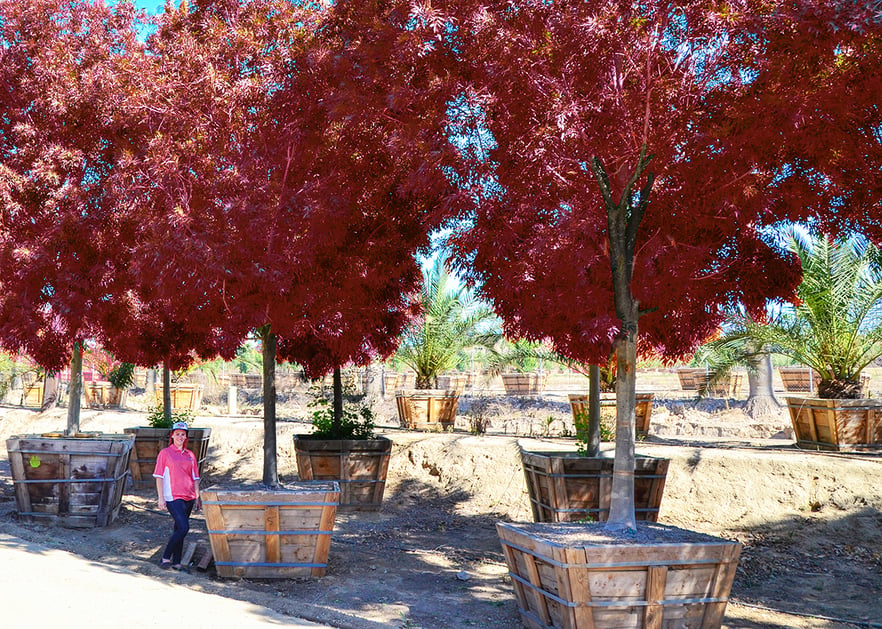 The Raywood Ash is our tree of the week for Arizona! We love these deciduous trees, and they put on a spectacular show when their beautiful dark green leaves transform to a deep burgundy color that is sure to get your yard noticed for all the right reasons! Also, since it’s deciduous, you’ll have an easy one time clean up! Of course, what we really love about them is that they can grow to be a beautiful tree with a canopy that is capable of providing plenty of widespread cooling shade when we need it most – in the summer!
The Raywood Ash is our tree of the week for Arizona! We love these deciduous trees, and they put on a spectacular show when their beautiful dark green leaves transform to a deep burgundy color that is sure to get your yard noticed for all the right reasons! Also, since it’s deciduous, you’ll have an easy one time clean up! Of course, what we really love about them is that they can grow to be a beautiful tree with a canopy that is capable of providing plenty of widespread cooling shade when we need it most – in the summer!
Raywood Ash Love to Grow in Arizona!
Raywood Ash, (Fraxinus oxycarpa ‘Raywood’) trees are tolerant of strong winds so that they are ideal for growing in our area. Also, compared to other Ash species, they are more tolerant of dry soils. Take care of this beautiful tree, and it will reward you and your landscape for years!
Exposure and Where to Plant
These trees love to grow in a location that receives full sun exposure. Full sun exposure amounts to at least six hours of direct sunlight per day. These are well-suited as a spectacular lawn specimen and shade tree, so plant one now and enjoy the view!
How to Water
These trees are vigorous, fast-growers. A newly planted Raywood Ash can be deeply watered and allowed to dry between watering. Once established, these can be an excellent tree for any water-wise landscape. 
How to Trim
Remember being a kid and drawing trees that looked like a lollipop? The Raywood Ash is one such tree and knowing how to trim one correctly will ensure that it looks fantastic all year long! If you’ve got a young tree, you’ll want to prune it in late fall to establish a central leader.
You will want to prune to remove any crossing, rubbing, or other branches that may need to be removed for optimal growth and health.
- When removing branches, always trim back to the point of origin and make sure your cut is made on green-wood. Scrape away a thin strip of bark and look for brown wood underneath. Green wood is healthy wood.
- You’ll want to trim back any damaged branches to a lateral branch and do this at least 6-inches into healthy wood. Also, to prevent any scrape wounds you’ll want to eliminate crossing branches.
- If you see big scaffold branches directly opposite of each other, this can weaken the structure of the tree. You'll want to encourage the formation of other lateral branches spaced evenly. To do this remove whichever opposite branch is the weaker one.
Tools You’ll Need:
- Garden Clippers
- Pruning Saw
Tip: Wrapping the trunk in the summer is an excellent way to keep these trees healthy during the hottest times of the year!
If you don’t have the time, tools, or the skills required to trim you can always leave the trimming to our professional care division. Set up an appointment anytime and our professional crew will be glad to care for your tree properly.
Submit a Comment